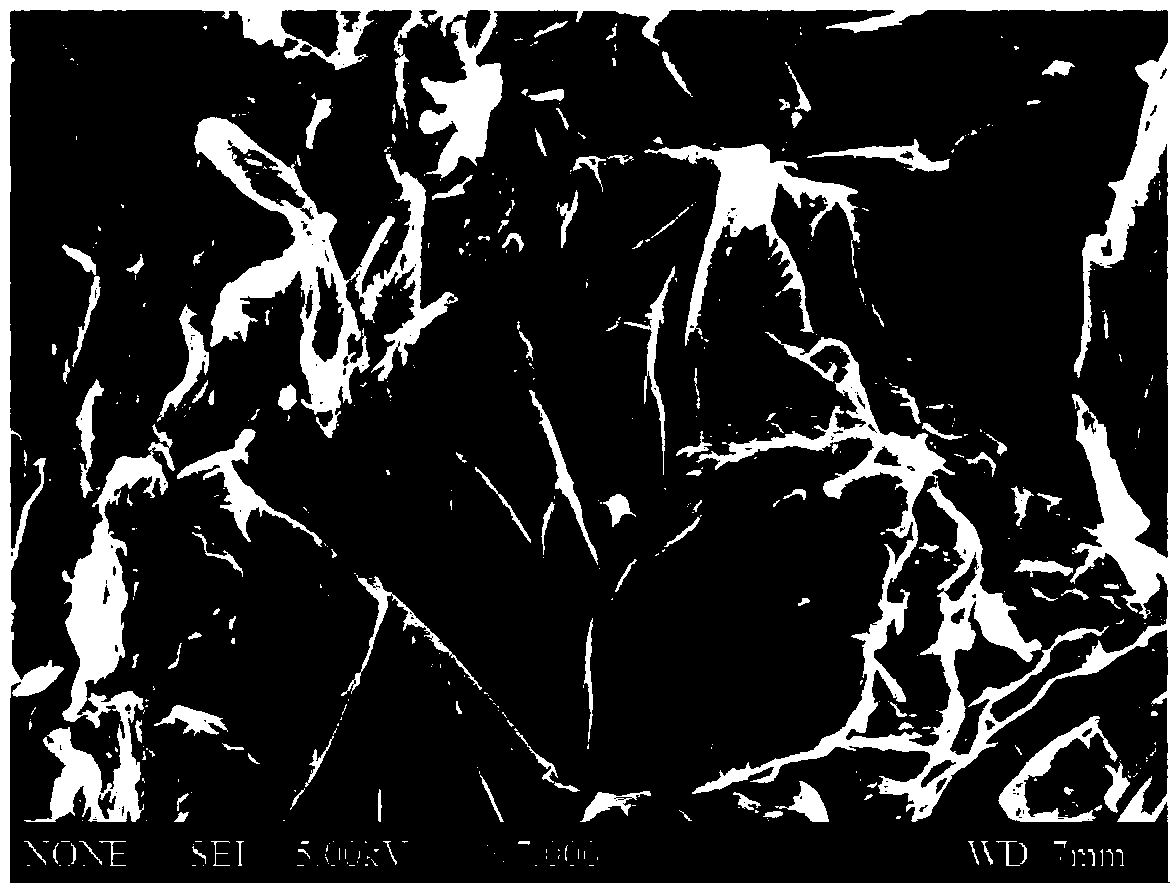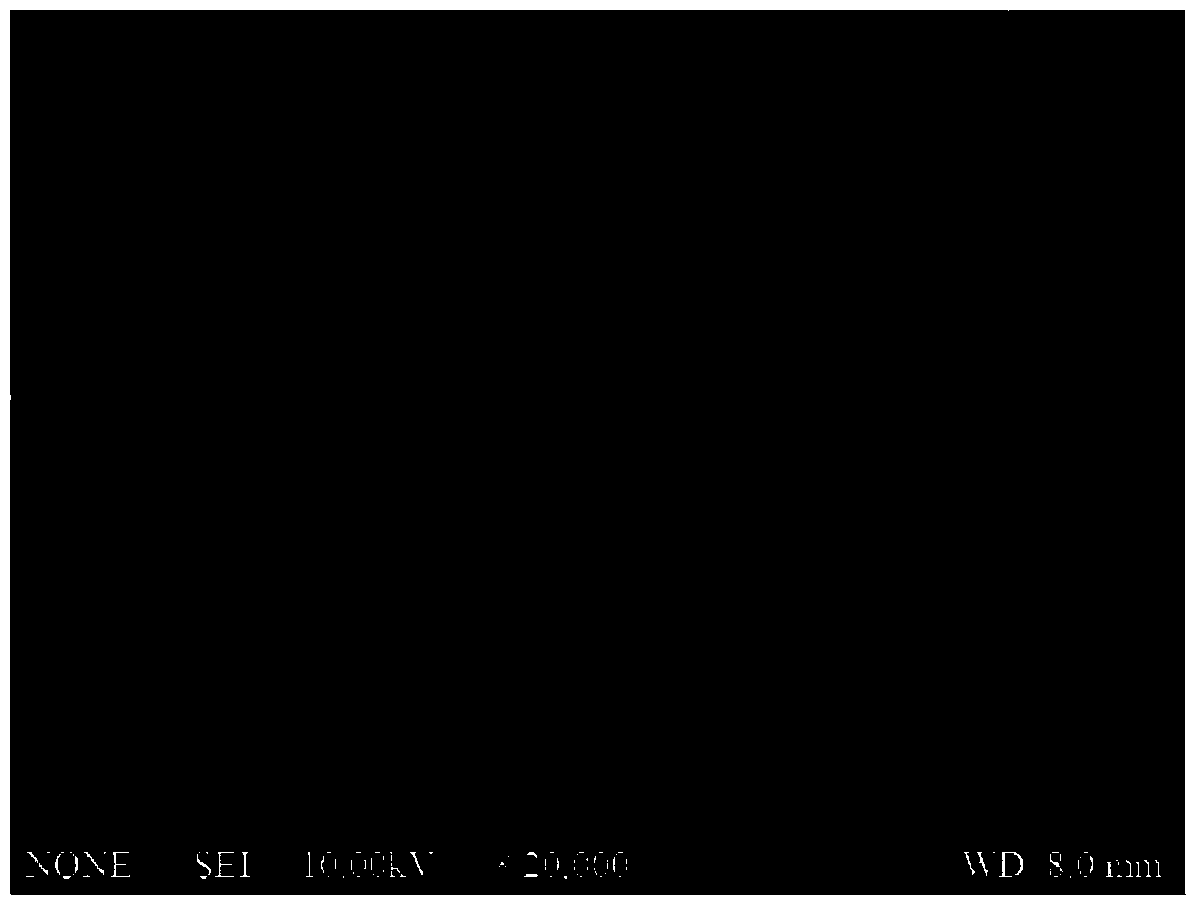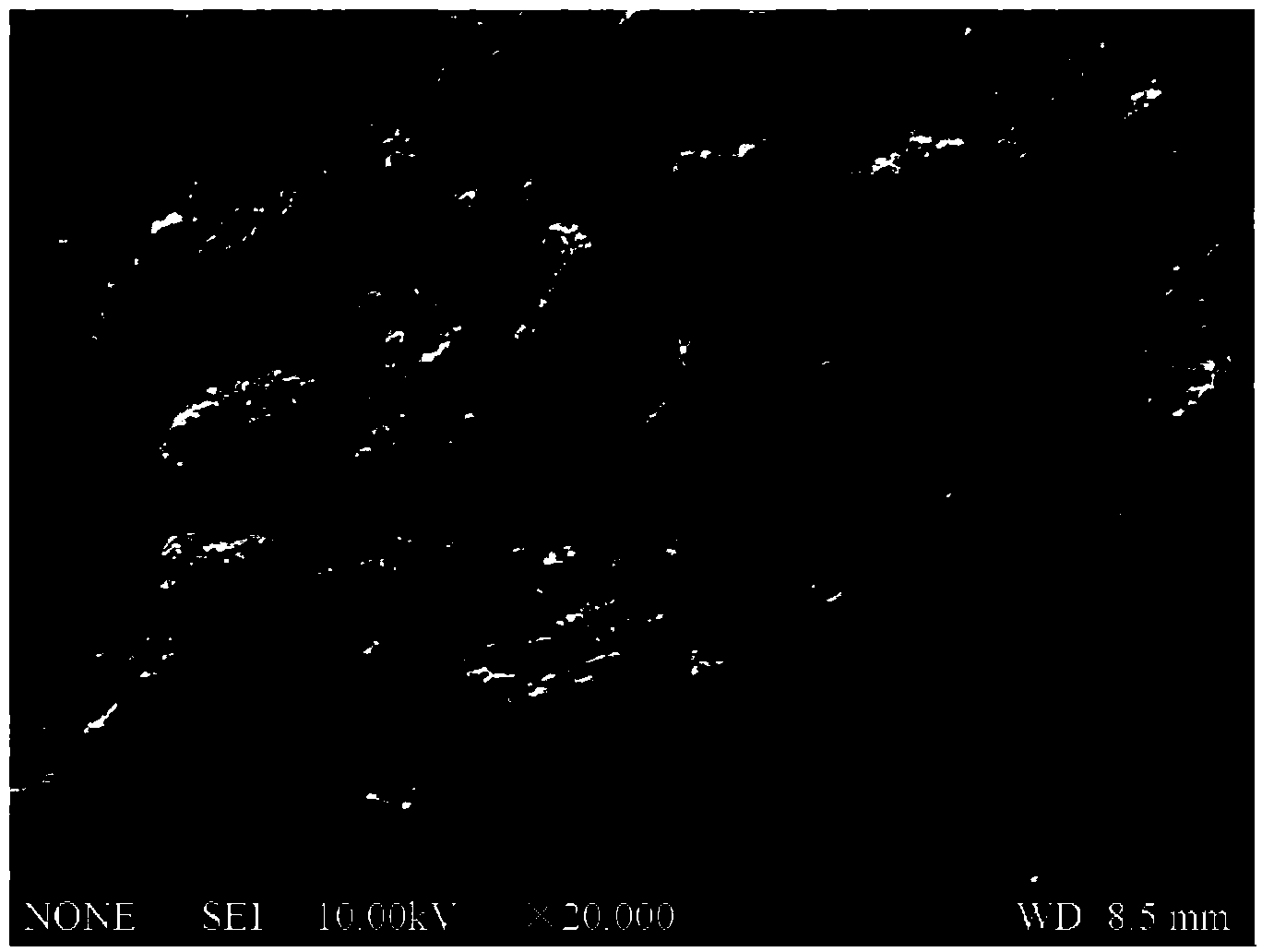Compound grapheme absorption agent, method for preparing compound grapheme absorption agent and application of compound grapheme absorption agent
A technology of graphene and adsorbent, which is applied in the field of composite graphene adsorbent and its preparation, can solve the problems of restricting the application of pollutant removal, reducing the specific surface area of graphene, and less application of graphene materials, so as to improve the dispersion and The effect of hydrophilicity, low cost of treatment process, and easy control of conditions
- Summary
- Abstract
- Description
- Claims
- Application Information
AI Technical Summary
Problems solved by technology
Method used
Image
Examples
Embodiment 1
[0042] The preparation method of the composite graphene adsorbent of the present embodiment may further comprise the steps:
[0043] (1) Disperse graphene oxide in water, and obtain a graphene oxide suspension with a concentration of 4 mg / mL after ultrasonic dispersion for 30 minutes;
[0044] The graphene oxide of the present embodiment is synthesized by the modified Hummers method, and the specific steps are as follows: 10 g of graphite and 5 g of sodium nitrate are slowly added to a flask containing 230 ml of concentrated sulfuric acid, and stirred in an ice-water mixture. After 30 min, slowly add 30 g Potassium permanganate, during the stirring process, control the reaction temperature to always be less than 15°C and keep it for 90 minutes; transfer the reaction system to a constant temperature water bath at 35°C, keep the reaction temperature at 35°C, and stir for 30 minutes; add 460mL of Deionized water, the reaction temperature is controlled at 80°C to 95°C, and the sti...
Embodiment 2
[0054] The preparation method of the composite graphene adsorbent of the present embodiment may further comprise the steps:
[0055] (1) Disperse graphene oxide in water, and obtain a graphene oxide suspension with a concentration of 6 mg / mL after ultrasonic dispersion for 60 minutes;
[0056] (2) Add nano-zero-valent iron and cetyltrimethylammonium bromide to the graphene oxide suspension obtained in step (1); wherein, nano-zero-valent iron, graphene oxide and cetyltrimethylammonium The mass ratio of ammonium bromide is 1:2:9, fully stirred, and reacted for 5h at 50°C, and obtained a reaction solution after complete reaction;
[0057] (3) Heating the reaction solution obtained in step (2) to 85°C, adding a reducing agent potassium borohydride, and obtaining a black flocculent precipitate after sufficient reaction; the mass of the reducing agent is 9 times the mass of graphene oxide;
[0058] (4) Suction filter, wash and dry the black flocculent precipitate obtained after ste...
Embodiment 3
[0061] The preparation method of the composite graphene adsorbent of the present embodiment may further comprise the steps:
[0062] (1) Disperse graphene oxide in water, and obtain a graphene oxide suspension with a concentration of 5 mg / mL after ultrasonic dispersion for 40 minutes;
[0063] (2) Add nano-zero-valent iron and cetyltrimethylammonium bromide to the graphene oxide suspension obtained in step (1); wherein, nano-zero-valent iron, graphene oxide and cetyltrimethylammonium The mass ratio of ammonium bromide is 1: 2: 8, fully stirred, and reacted for 4 hours at 52 ° C, and obtained a reaction solution after complete reaction;
[0064] (3) Heating the reaction solution obtained in step (2) to 82°C, adding a reducing agent sodium borohydride, and obtaining a black flocculent precipitate after fully reacting; the total mass of the reducing agent is 11 times the mass of graphene oxide;
[0065] (4) Suction filter, wash and dry the black flocculent precipitate obtained a...
PUM
 Login to View More
Login to View More Abstract
Description
Claims
Application Information
 Login to View More
Login to View More - R&D
- Intellectual Property
- Life Sciences
- Materials
- Tech Scout
- Unparalleled Data Quality
- Higher Quality Content
- 60% Fewer Hallucinations
Browse by: Latest US Patents, China's latest patents, Technical Efficacy Thesaurus, Application Domain, Technology Topic, Popular Technical Reports.
© 2025 PatSnap. All rights reserved.Legal|Privacy policy|Modern Slavery Act Transparency Statement|Sitemap|About US| Contact US: help@patsnap.com



